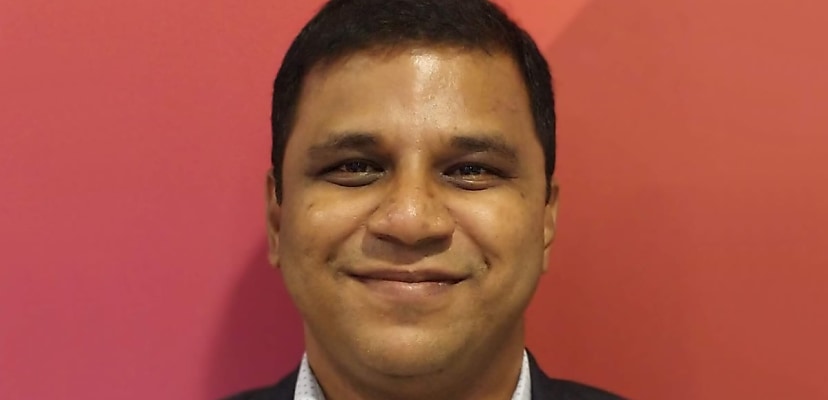Share this article on:
Powered by MOMENTUMMEDIA
Breaking news and updates daily.
Digital resilience is no longer a choice, and the last 12 months were a testament to that. With technology innovation accelerating by the minute and an ever-expanding threat landscape, organisations are presented with a unique predicament.

In fact, the Australian Cyber Security Centre (ACSC) received an alarming number of cyber crime reports, with more than 76,000 in the 2021–22 financial year alone – a 13 per cent year-on-year increase. Particularly concerning is the impact on the government and public sector, which was the hardest hit.
These statistics are ringing alarm bells and highlighting the need for Australia to take stock of its current cyber security capabilities. The threats and opportunities are clear – organisations need to look at how they reinforce resilience in the face of ever-evolving cyber threats.
Embracing new technology to harness the power of people
Technologies like artificial intelligence and data analytics have changed the landscape for cyber security. AI-powered solutions are revolutionising how we work, play, and live – but at the same time, it is important to recognise that cyber criminals also have access to the same technology that has enabled the advancements we are experiencing today. Bad actors are similarly leveraging AI to drive more sophisticated attacks.
AI has immense potential in detecting and mitigating cyber threats, and organisations need to embrace the technology to strengthen their cyber security posture. AI’s ability to fast-track incident responses by predicting where vulnerabilities could sit within an IT system will allow companies to uncover patterns that indicate a cyber attack is imminent and empower them to proactively plan a response to attacks.
Technological advancements alone are not enough to combat the ever-evolving threat landscape. While companies can use modern technology to respond to attacks quickly and efficiently, a cyber security expert is needed to solve complex issues that AI can’t. This includes making decisions about where to deploy technology to achieve the best results and educating employees on how to stay safe online. However, the skills and talent gap continue to plague the industry. A recent Australian Information Industry Association (AIIA) survey found that two in five respondents believed that Australia was not equipped with sufficiently skilled cyber security workers.
Embracing modern technology will ease some of the pressure on IT teams by automating repetitive and time-extensive tasks. This allows them to focus on innovation and take a proactive stance rather than reacting to and maintaining defences. It also enables them to adapt to evolving regulatory systems that are informing Australia’s approach to becoming the most cyber secure nation in the world.
Recognising the importance of cultivating a robust cyber security workforce, the private and public sectors are doing what they can to enhance education, training and certification programs and adopt modern solutions. Coupled with government-supported programs, it can help create a steady stream of talent and reinforce the efforts of the existing workforce to safeguard our nation’s digital infrastructure.
Fostering collaboration between industry and government
We’ve seen a growing number of sophisticated attack methods by professional cyber criminal groups that are making it impossible for individual organisations to keep pace. Responses to cyber attacks are also resource-intensive, requiring significant investments in technology, expertise, and infrastructure. Protecting against cyber threats is not solely the responsibility of the private sector, nor can it be achieved through public sector policies and regulations alone. The rapidly evolving nature of cyber threats requires a dynamic and coordinated response that combines the strengths and resources of industry and government.
Industry can offer valuable insights into emerging cyber security trends, innovative technologies, and real-world challenges, while government brings regulatory authority, access to intelligence, and a broader perspective on national security. By forging strong partnerships and sharing information, industry and government can bridge the gap between policy and practice – ensuring that cyber security measures are effective, practical, and adaptable to evolving threats. Such a collaboration would establish a unified front against cyber threats and strengthens Australia’s overall cyber security posture.
However, to cultivate strong collaboration and working relationships, there fundamentally needs to be a clear line of communication that encourages organisations to have their say on important issues, policies, regulations, and standards. Another key element is to facilitate cross-sector training programs and educational initiatives. By bringing together industry professionals and government personnel, these programs can enhance mutual understanding, promote knowledge exchange, and foster relationships built on shared experiences. This can help enhance both sectors’ understanding of each other’s roles and capabilities, allowing them to efficiently respond to major threats and lessen or even stop an attack before it occurs.
Securing Australia’s digital future requires a comprehensive approach that leverages advanced technology, skilled professionals, and collaborative efforts. By embracing cutting-edge technologies, nurturing a talented workforce, and forging partnerships, Australia can build a formidable cyber security defence system. Organisations need to ensure that they’re not caught on the back foot when (not if) they are hit with a cyber attack. This means taking a strong proactive approach with their digital resilience practices and developing a solid foundation that they can use to quickly respond to threats.
Combating cyber attacks is a team sport involving people, process, and technology – with skilled human minds facing the arc of continuously evolving next-generation threats. In the digital age we live in today, the threats we face are vastly different from what previous generations had to navigate. However, responding to today’s threats will require the same spirit, resolve, determination, and unity to emerge victorious.
Anand Manoharan is the growth markets security lead at Avanade.
Be the first to hear the latest developments in the cyber industry.